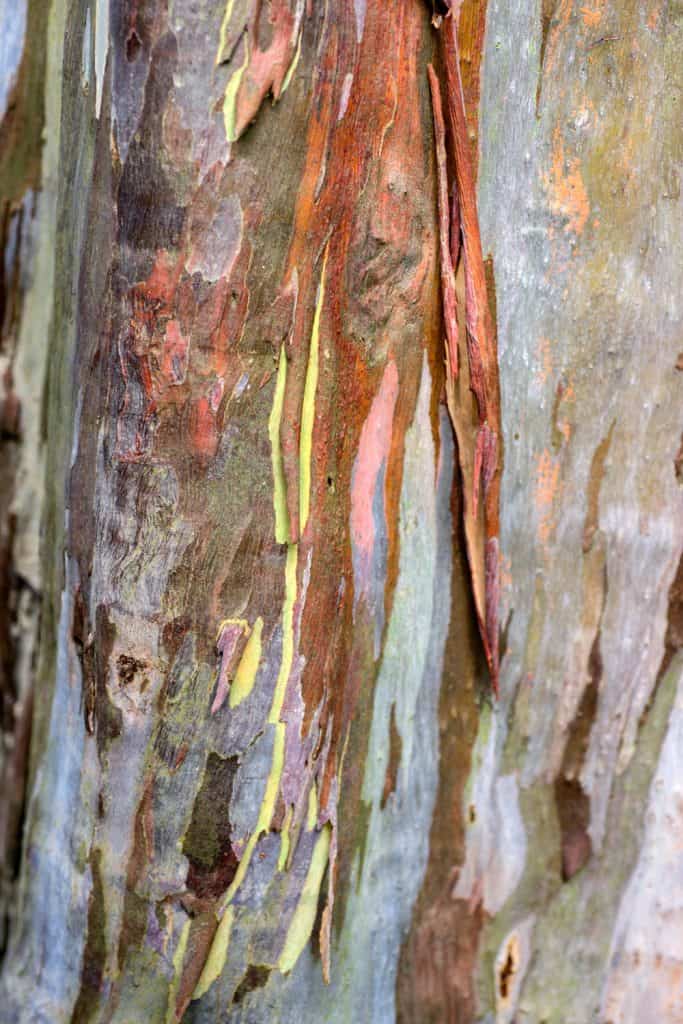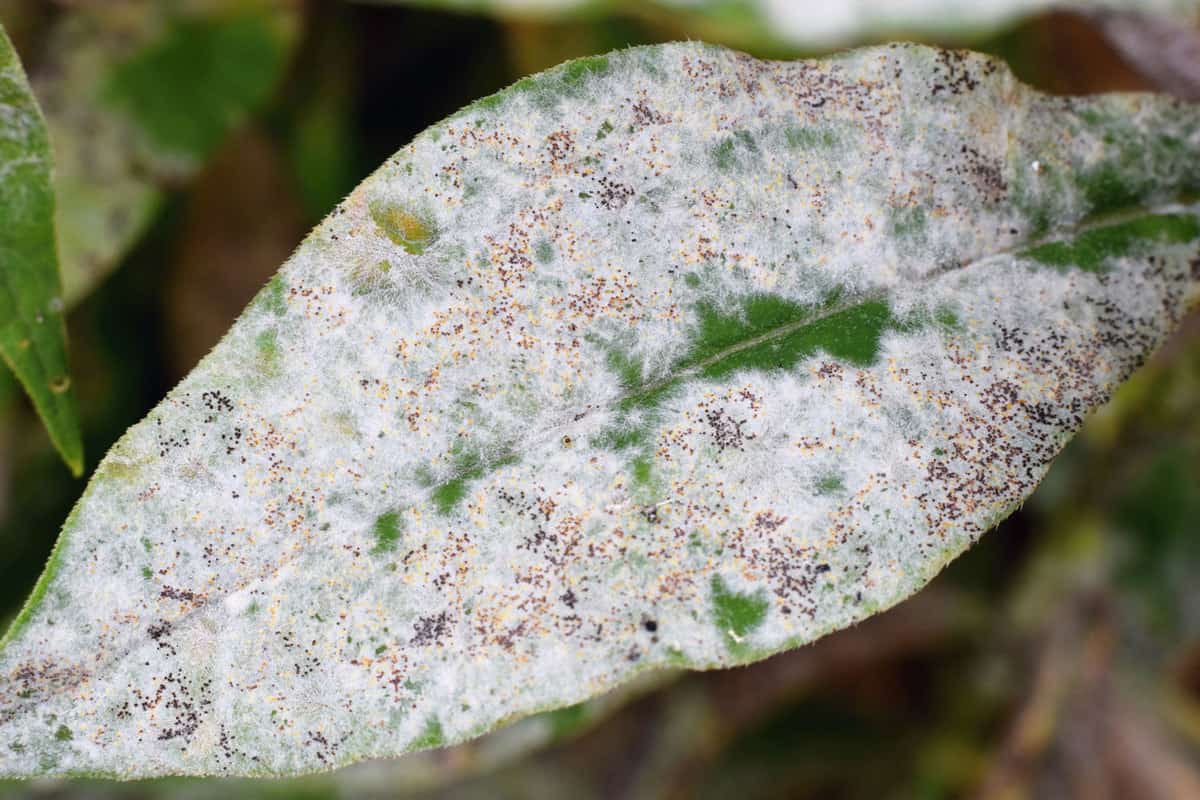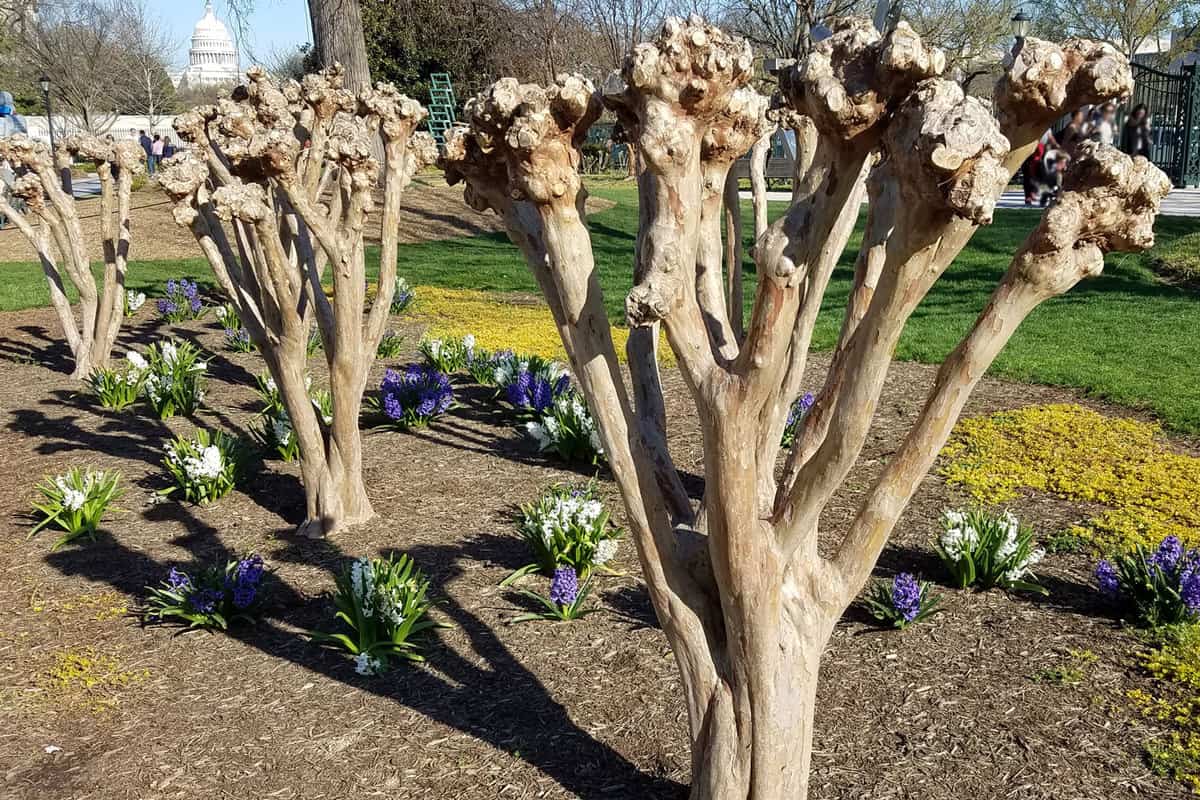Have you noticed bark peeling or splitting on your beloved crepe myrtle tree? Not to worry, as we've researched all about these beautiful, tough trees and will dive into what exactly could be causing bark peeling and splitting.
Do not be alarmed if you notice peeling and splitting bark on your mature Crepe Myrtle tree. This is a normal, desired behavior for a Crepe Myrtle, known as bark exfoliation.
Bark exfoliation might not cause concern, but a split trunk might. Continue reading for answers to some common trunk, bark, and leaf concerns on Crepe Myrtles.

How often will my Crepe Myrtle peel?
Peeling bark on a Crepe Myrtle is a revered quality of this tree. These trees are deciduous, and their bark is on full display during the winter.
When the bark completes the shedding process, it reveals a mottled puzzle piece-looking trunk. Due to this mottled trunk feature, these trees are often used as prized landscaping pieces in the Southern United States.

Once the tree reaches full maturity, about one to two years after being planted, you can expect bark exfoliation every year in some varieties. Depending on rainfall, other types have been known to shed bark every other year.
You can expect the bark exfoliation process to start in the fall when the leaves of the Crepe Myrtle begin to change and fall. Reaching completion in the winter months, it causes no harm to help the tree by peeling the bark off.
Pruning
Crepe Myrtles bloom with new growth. They should be pruned in fall or early winter [as pruning does affect cold hardiness] for maximum blooms in the spring.
It is best to gradually remove side branches to display the attractive bark in the winter months. Avoid chopping large trees into stubs, known as "crepe murder" or "butchering" in gardening circles.
Chopping down large trees into stubs is sometimes a common neighborhood trend. This encourages vigorous growth. However, the growth is of thin, weak branches too small even to support flower blooms, making for an unhealthy tree.
If you desire a smaller Crepe Myrtle, you can continuously prune back up to two feet at a time to a side branch. However, if a smaller tree is ultimately desired, it's best to transplant the bigger variety and select a smaller dwarf variety for the area where a smaller tree is desired.
Trunk Cracks
Trunk cracks are not necessarily a cause for concern. A common cause of cracks and splits in the Crepe Myrtle trunks is frost cracks.
Sharp temperature changes in overnight hours cause these frost cracks. Water within the tree will freeze overnight, causing the trunk to crack.
Even though the trunk crack is not fatal to the tree, you will want to be more vigilant about checking the tree trunk to keep pests and fungus at bay. The trunk cracks can allow disease or infestations to occur. The best defense against this is to treat the tree with an oil such as neem oil.
Check out this neem oil on Amazon.
Sunscald
Sunscald can also cause trunk cracking. This is when the sun hits the trunk on a warm winter's day and warms the surface of the bark. Then, the area previously warmed by the sun rapidly freezes at night, causing a crack.
What causes bark scale on a crepe myrtle?

Bark scale [CMBS] is a recently discovered fast-spreading pest. It has been tentatively identified as Eriococcus Lagerstremia, yet DNA testing is currently being done to determine the true identity of this pest.
CMBS feeds on both Crepe Myrtles and pomegranates. The insects cause extensive honeydew deposits and black sooty mold growth on the Crepe Myrtles.
CMBS seems to be hard to control once an infestation occurs. Currently, the best suppressor appears to be soil-applied neonicotinoids.
In combination with the soil-applied neonicotinoids, you can also mix dish soap with water and coat the tree and branches. Once coated, rub the tree with a soft bristle brush. This can reduce the female scale and eggs.
Certain lady beetle species are effective predators of bark scale. However, control via this method seems to be introduced too late in the season to prevent aesthetic damage.
Though CMBS is unsightly and can occasionally stunt growth if there is an extensive infestation, it is not typically fatal to a Crepe Myrtle. To further prevent bark scale on Myrtles, you can seek out resistant varieties of trees.
Another effective method to prevent or keep bark scale to a minimum is to plant your trees in sunny areas with good air circulation. Trees planted in the sun with good air circulation have been shown to have fewer scale issues.
Sooty Mold
Aphids are another common Crepe Myrtle pest. They are pale yellow and are commonly found on the underside of the leaves.
Aphids are more likely to infest trees with excessive nitrogen. This can be a result of overfertilizing.
Aphids can also cause sooty mold on the Myrtle leaves. To treat Aphids, you will want to use insecticidal soaps or horticultural oils since they are soft-bodied insects.
Lady beetles can help to control these pest populations as well, along with being planted in full sun with good air circulation. Once the infestation is managed, the sooty mold can be washed off the tree or left on its own it will eventually fall away.
Powdery Mildew

Powdery mildew is a fungus that is common amongst Crepe Myrtles. If your Myrtle has a white film on the leaves, shoots, buds, or occasionally the flowers, the likely culprit is powdery mildew.
Dark seed-like formations may show up on the fungus as well. These can survive the winter temperatures and reinfect the Myrtle in the springtime.
Treatment can include improving air circulation by pruning the canopy to open it up. You can also spray your Myrtle with fungicides as soon as you notice the white film.
Depending on how far the infection has spread, you may need to repeat treatment with fungicides every week or two. Gardening experts recommend planting various naturally resistant to powdery mildew or planting your tree in full sun.
Cercospora Leaf Spot
Cercospora leaf spot is another fungal infection the Crepe Myrtle can fall victim to. Symptoms of this fungal infection include premature defoliation and fall-like discoloration on leaves in the late summer months.
The fall-like discoloration is due to the leaves reacting to toxins produced by the fungus. Cercospora typically causes no harm to the infected tree.
Experts recommend removing the affected fallen leaves regularly to prevent further spread of the fungus. Experts do not recommend taking action with any fungicidal sprays for leaf spot.
How often do Crepe Myrtles shed their bark?

Some varieties will shed their bark every year. Other varieties will only shed their bark every other or every few years. If you are excessively pruning, known as "crepe murder," your bark will likely not shed.
Will damaged tree bark grow back?
Yes, the damaged tree bark will eventually shed and grow back if the Myrtle is left to fully mature.
Can a tree with a split trunk survive?

The tree will most likely compartmentalize the wound and recover. If you are concerned the tree has died, you can perform a simple scratch test.
To perform a scratch test, you take either your nail or a small knife to scratch some bark off the tree. If you see green underneath, your tree is alive!
If you reveal no green underneath after performing the scratch test, you will want to continue scratching until you reach green. Once you reach green under your bark, you will want to cut back any dead branches and trunk until the topmost points where you discovered green.
In Summary

Now that you know bark exfoliation is a prized feature of this popular landscaping tree, we hope you have found a wealth of information on proper ways to treat and care for your Crepe Myrtle in this article. Though they can fall victim to some diseases and infestations, the Crepe Myrtle is a hearty, tough landscaping tree that won't disappoint in any landscaping arrangement!
If you have enjoyed this article, please consider these for further reading:


Can I root a piece of crepe myrtle in water or special rooting soil then plant in ground?